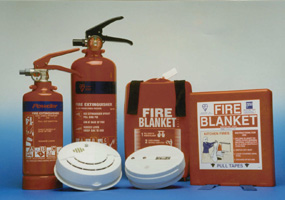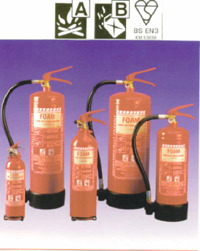 |
What do I do with my old fire extinguishers?
Branch Chief - National Training Department
United States Coast Guard Auxiliary
By Wayne Spivak
 |
 |
It invariably happens. In fact it's almost common-place. One would be amazed at how much this has become such a common occurrence.
It happens every time I teach a safe boating course. It happened just the
other day, by e-mail. It is that e-mail that has prompted this article.
What happens? I'm asked "What do I do with my old fire extinguishers?"
Fire extinguishers manufactured in the decade come in three varieties, water filled, gas filled and chemical filled extinguishers. With the exception of chemical filled extinguishers, both water filled and gas (CO2) filled extinguishers are inert, and are not harmful. The dry chemical variety can cause irritation, so extra care should be taken with these units.
Older fire extinguishers may have been charged with chemicals such as carbon tetrachloride or halon. If in doubt, contact your local fire department or fire extinguisher service companies (found conveniently in the yellow pages).
The common denominator in the three different types of fire extinguishers mentioned is the fact that they each container is under pressure. Without pressure, when you squeezed the activating trigger, nothing would happen. This is why, on most units today, there is a pressure gauge.
Many of today's units are also rechargeable. This means for a small amount of money, usually a fraction of the cost of a new unit, you can have your fire extinguisher emptied, checked and re-filled.
But let's get back to the inevitable question. You don't want the old fire extinguisher. What do you do with it?
First and foremost, contact your local fire department, sanitation department or environmental protection department and find out what your local laws stipulate. Some locals consider fire extinguishers as hazard waste. Others won't permit you to put fully charged extinguishers in with the regular garbage.
However, you may be able to dispose of discharged extinguishers. If you are permitted, here's the chance to practice what we hope you will never have to do, use the fire extinguisher.
Remember, when you use a fire extinguisher, you point at the bottom of the fire, and spray with a left to right (or right to left) motion using short bursts from the fire extinguisher.
A unit under pressure, if crushed, can explode. Once the unit is discharged,
there is no potential of an accident should the extinguisher be crushed during
the disposal phase.
To learn more about what to do during a boating emergency, why not take a
boating safety course! The United States Coast Guard Auxiliary has a variety of
boating courses geared for all levels of boating knowledge. You can contact your
local Auxiliary Flotilla by either calling your local Coast Guard unit or
visiting the Coast Guard on the web at
http://www.uscg.mil or the Coast Guard Auxiliary at
http://www.cgaux.org